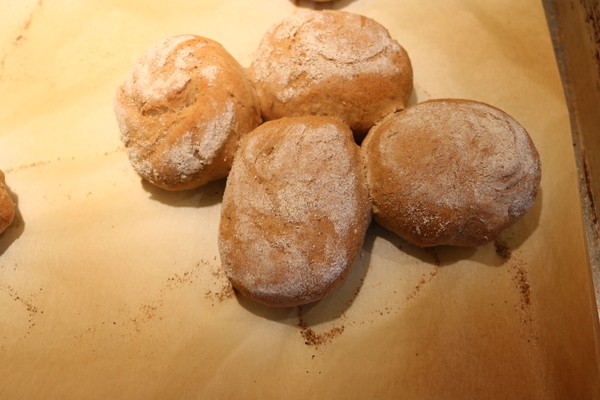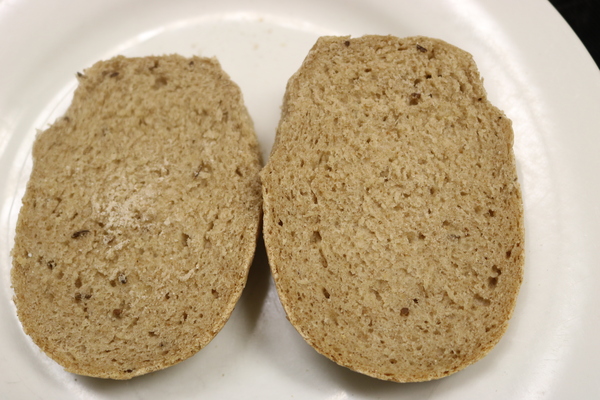Home › Forums › Baking — Breads and Rolls › Coming Through the Rye › Reply To: Coming Through the Rye
Report on Munich Penny Rolls (The Rye Baker pps 198-201):
This recipe made 16 rolls about 3 1/2 by 2 1/2 by 1 1/2 inches, with a variance of about 1/4 inch. They weighed 75 grams each (2.65 ounces).
This is one of the recipes in The Rye Baker that lists first clear flour as an option in place of bread flour, and I used first clear flour in it. My experiences with other breads using first clear flour seem to suggest those breads can go moldy faster than ones made with bread flour, I don't know if that will be the case here yet.
It calls for red rye malt, which you make by toasting rye malt. I got some chopped rye malt from a home brew supply store and ran it through my impact mill before toasting it.
I had to add about 1/3 to 1/2 cup more of both rye and wheat flour than the recipe called for, not sure if that was a liquid measurement issue, and it took a while before the dough came together. This is the first recipe I've made where the scale weight (83 grams each) was above that suggested in the recipe. It didn't pull a very good windowpane, but it was pretty stiff after about 10 minutes of machine kneading, so I declared it ready. It rose well both in the bulk rising and after scaling and shaping.
The rolls are baked in sets of four arranged as shown in the top picture. Ginsberg calls this a herringbone.
They're a bit milder in flavor than I was expecting, but they taste very good plain, with a little butter, or as a sandwich roll. I haven't tried toasting them yet. I was expecting more of a crisp outer crust, it is stiff and a bit chewy (like a lot of sourdough breads), but not really crisp. Maybe they'll crisp up some overnight.
I would make these again.



